The Enchanted Valley
A 2022 | 28:50 min | HD 16:9 | colour | DCP 5.1
by Barbara Horvath
It is a kind of survey of the world of an Alpine valley. Across a barren, rocky mountain landscape, among wild animals, along meandering creeks and streams – in this isolated world she gently wanders, a spectral and nomadic movement through a serene, untainted, self-sufficient natural realm, without a sign of human civilization. The camera follows her – the Diala, a supernatural creature – circumspectly, with extraordinary poetry.
The story that Annja Krautgasser tells is based on the Rhaeto-Romanic song “Canzun de Sontga Margriata” from the 7th century B.C.E. According to the pagan legend, Saint Margriata lived as a man for seven years among the herdsmen of the high Alps, until a boy discovered her secret and threatened to reveal it to the others. Margriata implores him to keep quiet with promises of magical presents, but he turns them all down. Unable to quench his desire to betray her, Margriata finally curses the shepherd boy and flees from the paradisiacal valley, which then turns dry and desolate.
As a so-called Diala, Margriata embodies the archetypical figure of the wild, autonomous, fairy-like woman who is determined to live independently. Knowledge of the presence and activities of Dialas in regions where Romance languages are spoken is still very much alive. These are natural creatures who in most legends have the power to bestow fortune or misfortune and who sometimes also harbor a secret. “She fell onto a wicked stone slab / and her glowing breasts were revealed.” With three voices and the shepherd boy’s recurring refrain
I don’t want them, I won’t take them.
Our herdsman must know
what a blessed maid we possess
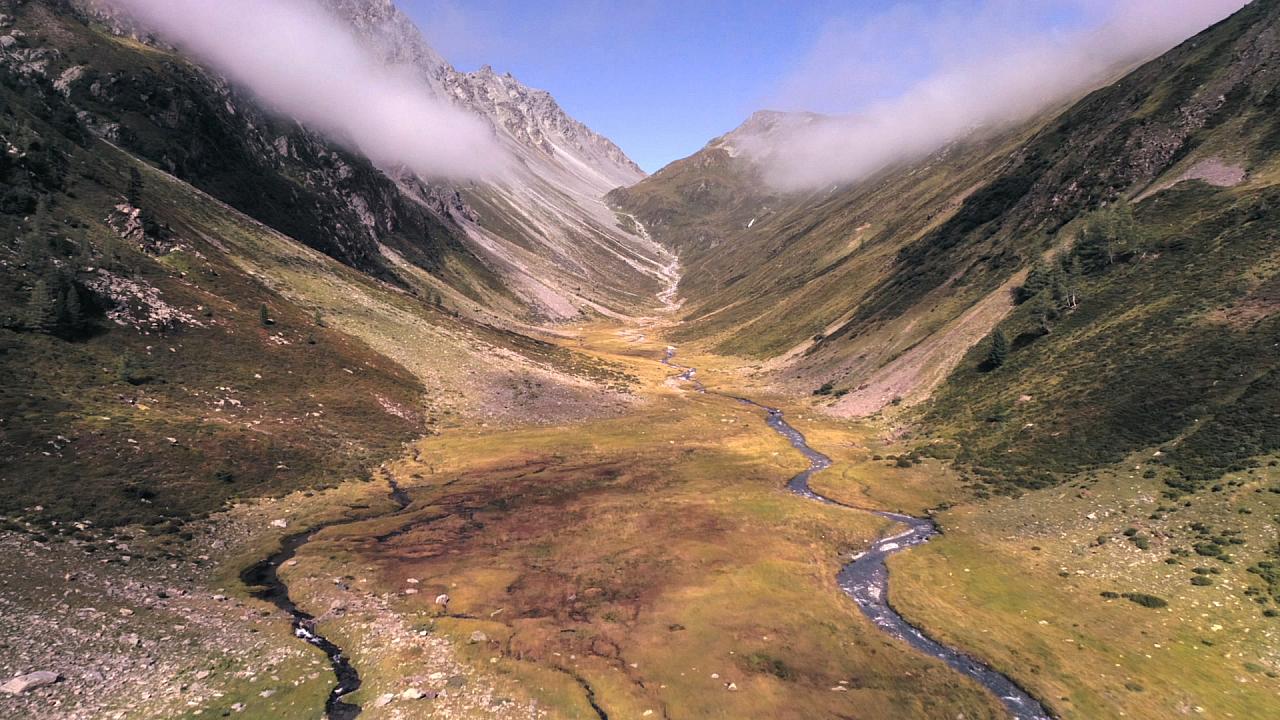
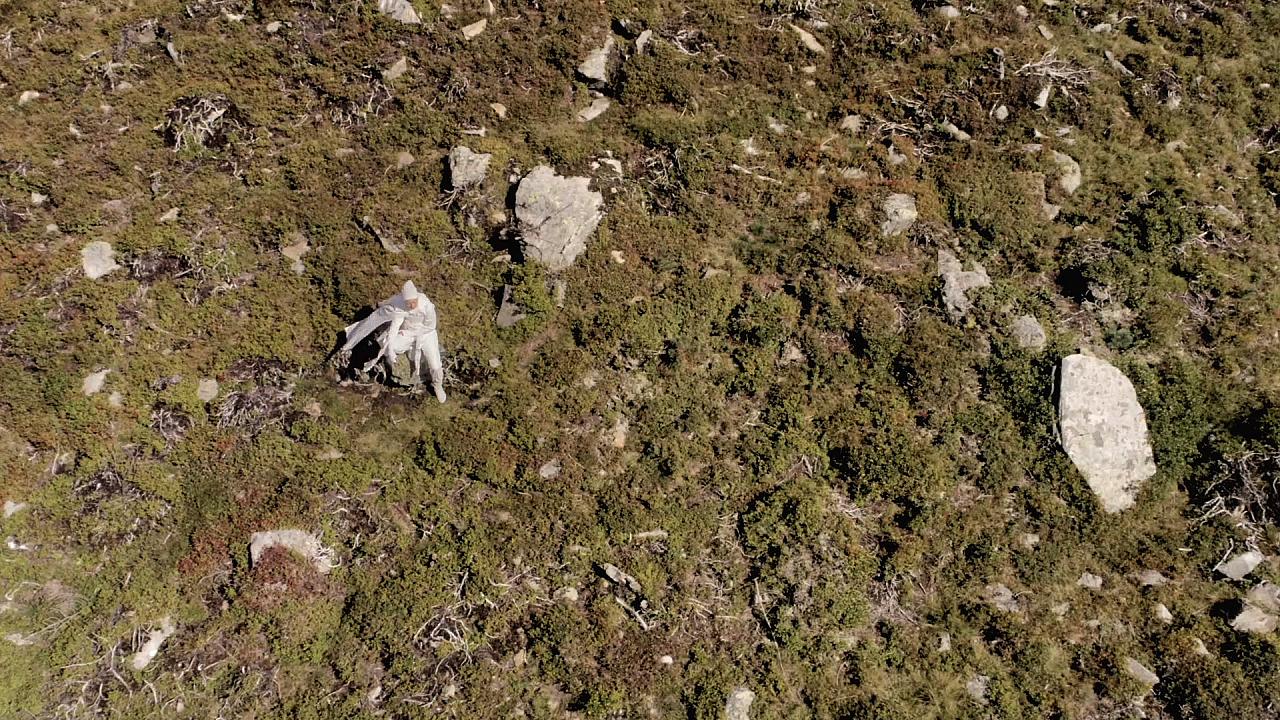
© video still The Enchanted Valley
the song of Holy Margriata is one of the oldest oral literary documents to survive in Europe (though it was nearly lost). Yet it is also a suspenseful drama with a tense exchange between Margriata and the shepherd boy. The film’s structure matches the back and forth of the dialogue between the protagonists, as views of the landscape from different perspectives (close-ups, panoramic and overhead shots) alternate with the non-verbal depiction of the Diala. Acoustically, the song’s repetitive structure drives the story forwards, as Margriata’s promises to the boy become more and more valuable. Only after she sinks him into the ground with her curse does he briefly reconsider, though in the end he finally succumbs to the desire for the herdsmen’s recognition by revealing her secret.
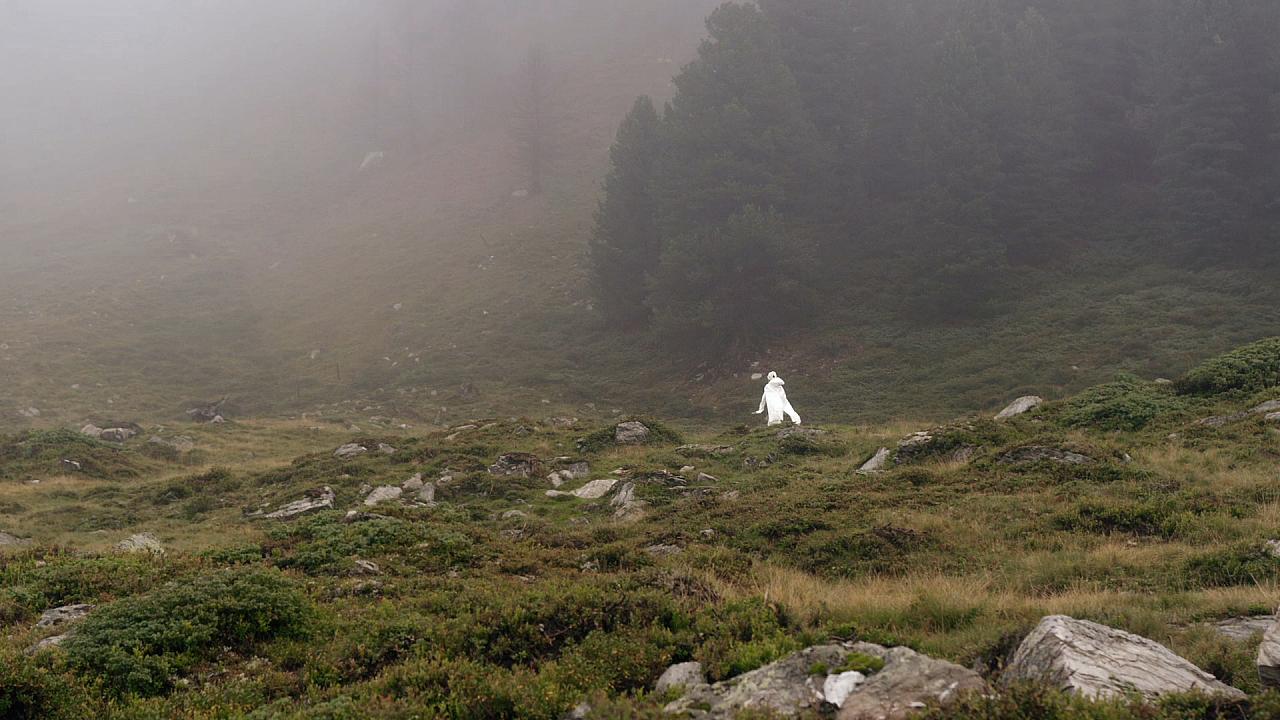
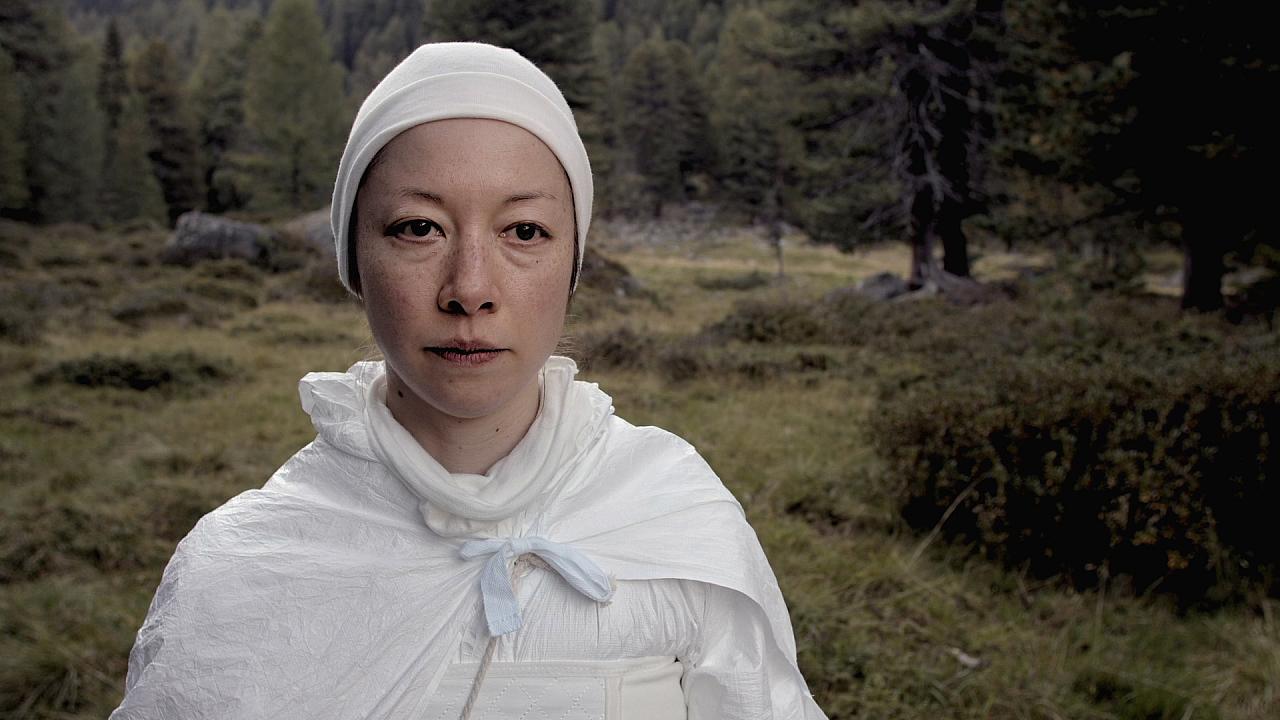
© video still The Enchanted Valley
In nature, from nature and with nature, the white-clad Margriata – a reference to Ingrid Bergman in Roberto Rosselini’s Stromboli, terra di Dio (1949) – is able to register the vastness of the landscape with all of her senses. This experience of the sublime lies not in the landscape itself, but in the human experience of it. The perception of the boundless, or as Immanuel Kant put it “the utterly large” – something that actually defies our sensory capabilities – gives rise to the fear of the unforeseeable, the infinite, or it reduces this fear to something finite or transitory, which according to Gilles Deleuze first manifested itself in “time-images” in the cinematic movement known as Italian neorealism. The visual and acoustic situation in which Margriata finds herself induces viewers to no longer merely see but rather to “read” the image.
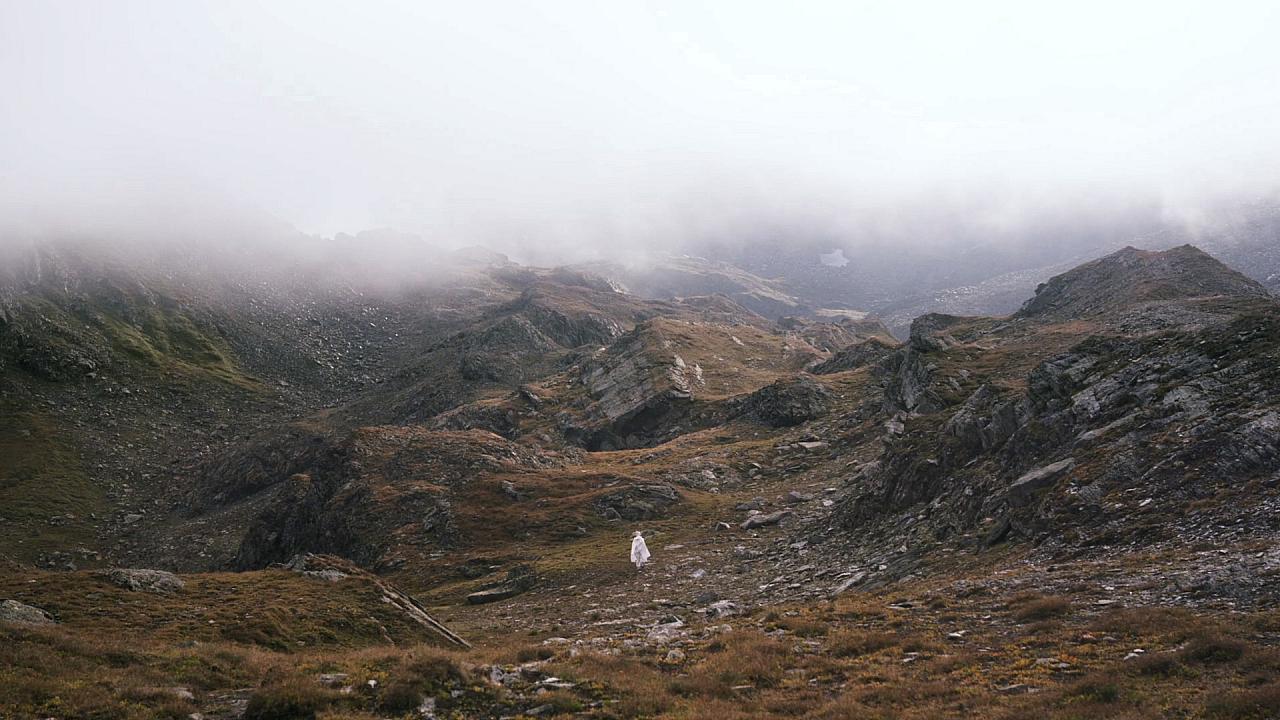
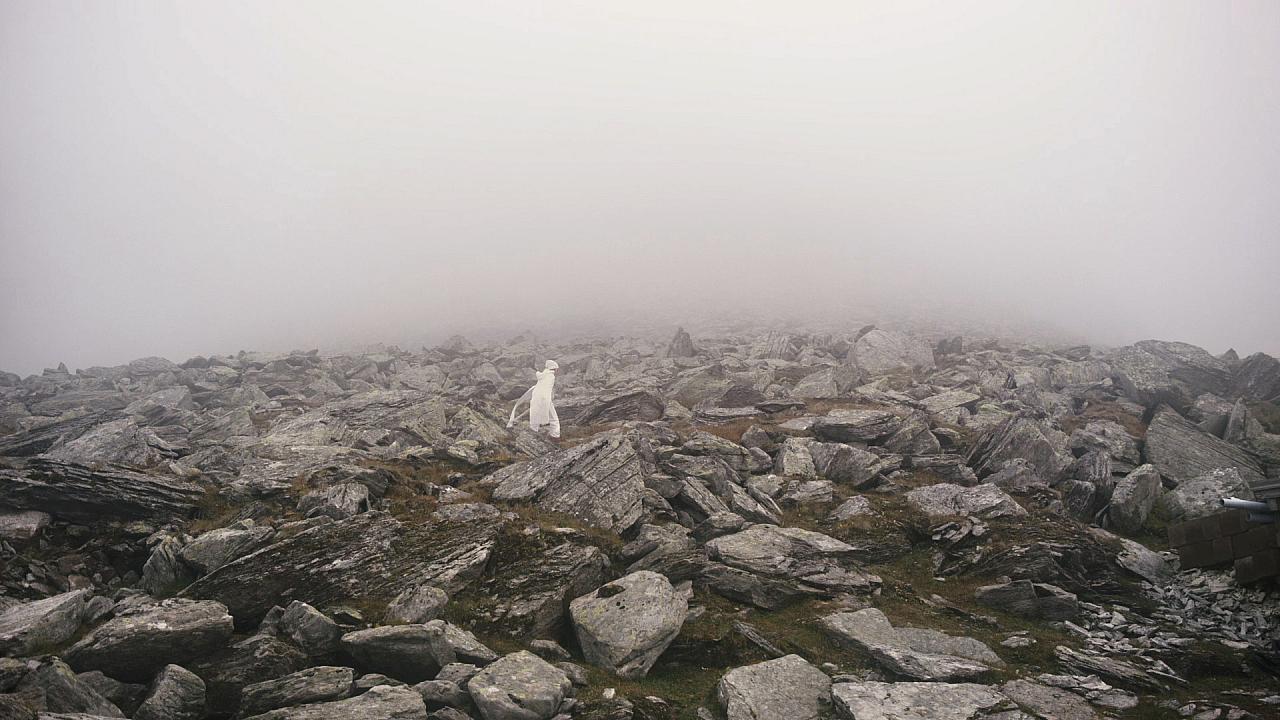
© video still The Enchanted Valley
While fleeing from the island over the smoking mountain Ingrid Bergmann begs for God’s help, cries and collapses, though she continues in her determination to defy small-minded, patriarchic structures. In a similar fashion Margriata stands up to the shepherd boy and insists on an autonomous life, revealing her gender and demanding to be accepted as a Diala. On the fog-enshrouded mountainside Margriata turns around one last time. Through the figure of the female saint Annja Krautgasser shows once again the hopelessness, fragility and individual resistance that the marginalized feel in the face of hegemonial forces.
Ingrid Bergmann goes. Margriata goes. Undine goes: “For the ending that comes to no end. It was never the end.”
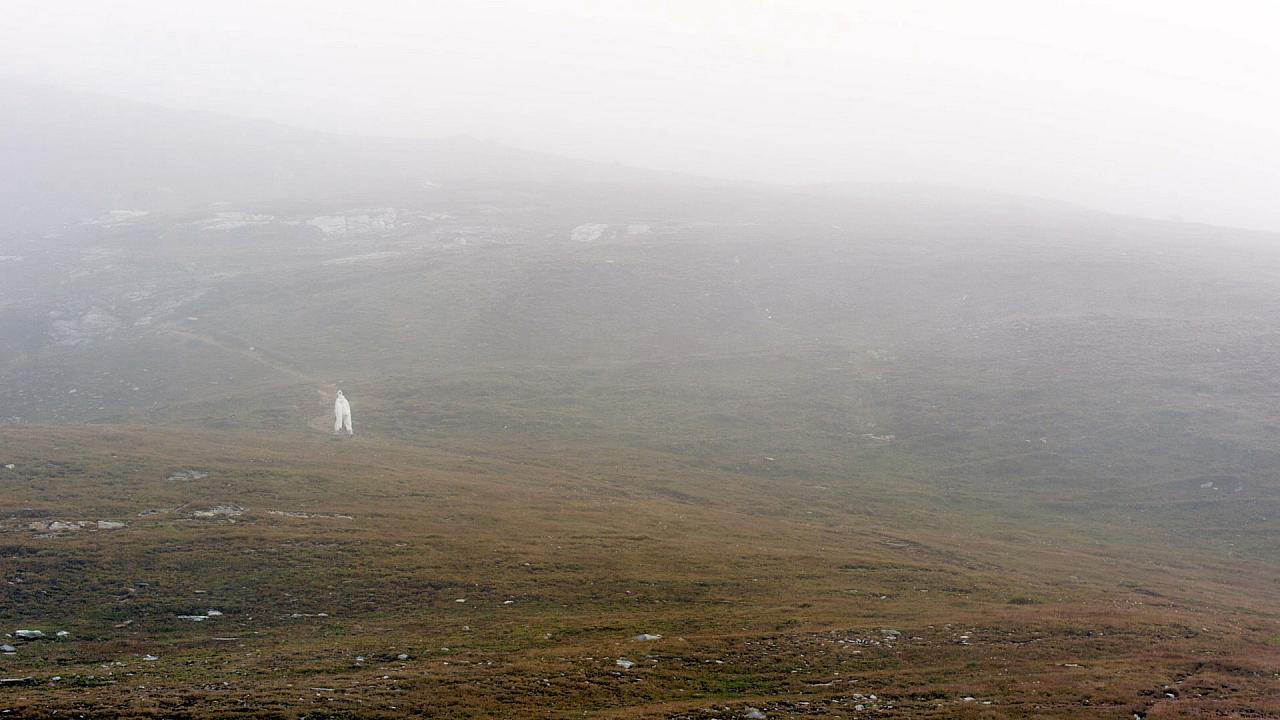
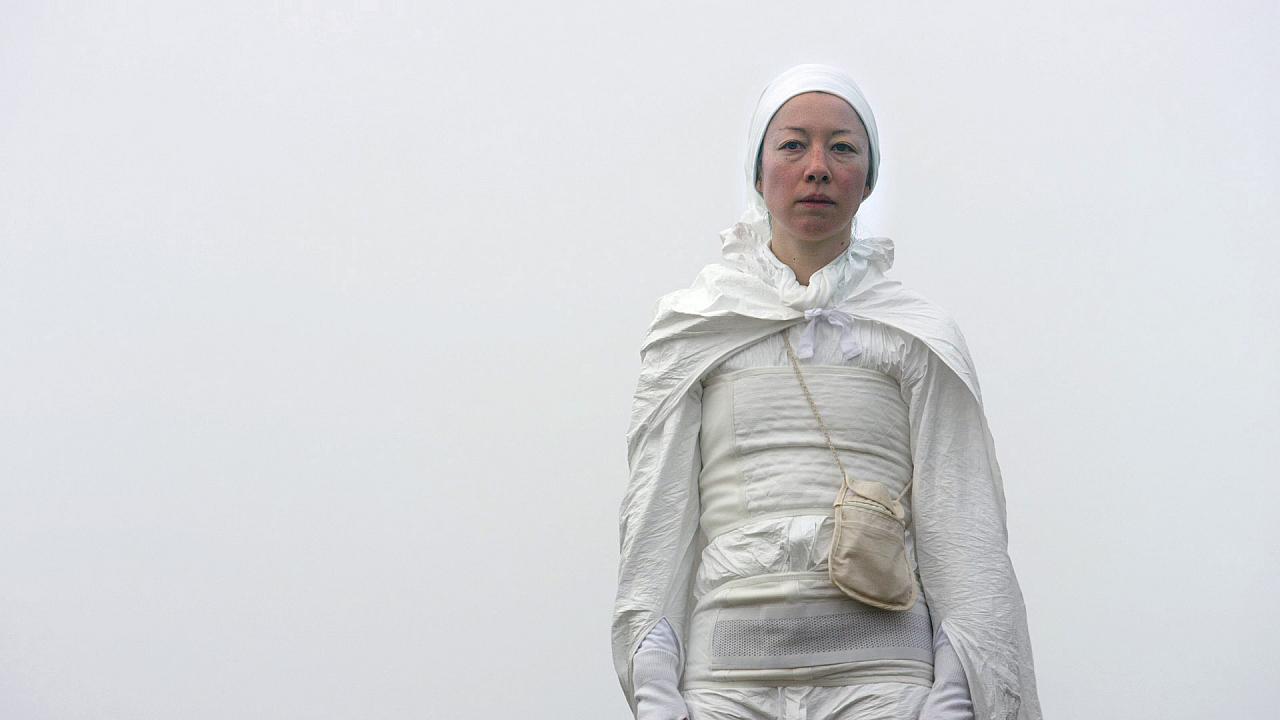
© video still The Enchanted Valley
Director: Annja Krautgasser
Camera: Martin Putz
Audio recording: Julia Sternthal, Ursula Winterauer
Sounddesign: Ursula Winterauer
Editing: Julia Sternthal
Colourgrading: Martin Putz
Soundmix: Sebastian Meyer
Assistance: Wolfgang Oblasser
Costume: Inès Fogarasi
Rhaeto-Romanic Coach: Remo Arpagaus
German translation: Pater Maurus Carnot
English translation: Chris Michalski
Folklore advice: Werner Kopp
Actress: Nina Fog (Margriata)
Singing voices: Nozomi Yoshizawa (Margriata), Jonathan Reich (shephered boy), Kurt Kempf (narrator)
Literature source: "Die Verzauberten Täler" (Christian Caminada)
Thanks to: Gemeinde St. Jakob in Defereggen, Neue Reichenberger Hütte, Jausenstation Trojeralm, Wegegemeinschaft Trojertal, Uli Fussenegger, Dariusz Kowalski, Fam. Krautgasser



DeutschEnglish